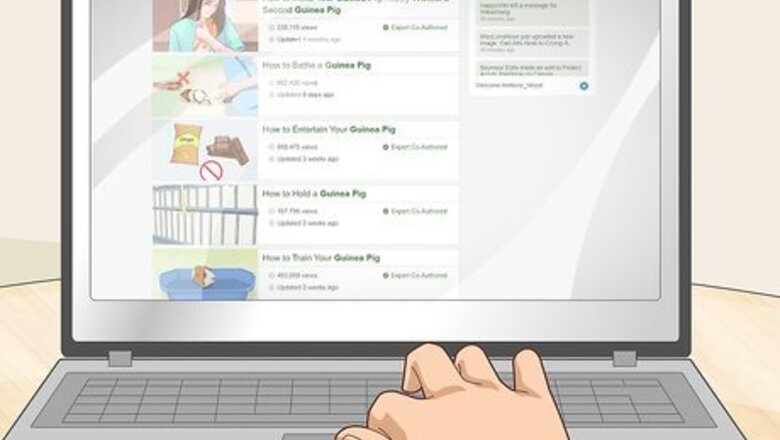
views
Starting Small
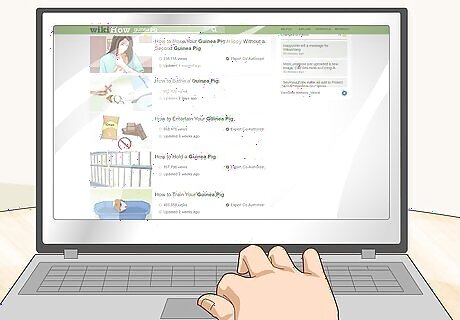
Do some research. Running an animal rescue is a great sacrifice that requires commitment, dedication, and devotion to animal care. It is not something you want to jump into without deep thought. While guinea pigs make great first-time pets, they are also high-maintenance and require a large deal of time and finances to successfully run a rescue. Before you start-up a guinea pig rescue, it's important to dedicate some time to extensive research and familiarise yourself with all the requirements of caring for guinea pigs and running a business. Every small detail should be carefully researched using credible sources of information. The Humane Society of the United States and GuineaLynx.com are two credible websites to seek information on guinea pig care. Check to determine if you'll need a business licence. Some states will require a licence specific to animal shelters. You can apply for a licence through your state's department of agriculture. Create a budget. You'll need to create a plan for your finances to ensure they cover the costs of the business set-up and the supplies needed to care for your guinea pigs. Estimate the price with a reputable breeder to find the approximate costs for food, bedding, housing, etc.
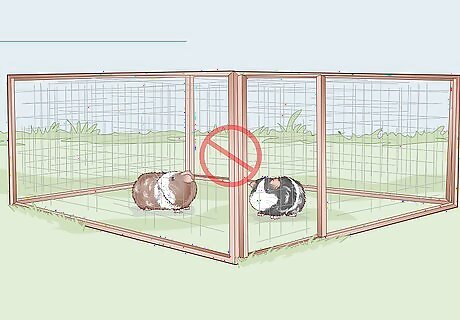
Understand the severity of backyard breeding. The primary cause of influx of guinea pig numbers is due to backyard breeding. Otherwise, some pet shops may cause accidental pregnancies because they do not sex their guinea pigs properly before selling them. Backyard breeding is an issue you'll need to mitigate while also raising awareness to guinea pig owners. Not only is backyard breeding an over-breeding issue, but it's also dangerous. Sows have a 20% mortality rate when they become pregnant, and if not bred at the right age, their risk of fatality only increases. Professional and reliable breeders are much different to backyard breeders. Backyard breeders are those who put a couple of guinea pigs together of the opposite sex and hope for the best. A professional breeder knows how to breed guinea pigs properly and has the financial security to call an emergency vet if required. There is a difference between one who safely breeds purebred pedigree guinea pigs and one who puts their two pets together because they think they will have cute babies.

Gain a financial platform. Avoid the consideration of running a rescue if you aren't financially secure. Guinea pigs kept as pets are expensive alone. A shelter will be even more costly unless you are able to bulk-buy. If you have a steady passive income from a separate source, starting a rescue could be a feasible option. Running a non-profit organization can also be stressful. Emotions will often come in toll, so you will need to mentally prepare yourself.
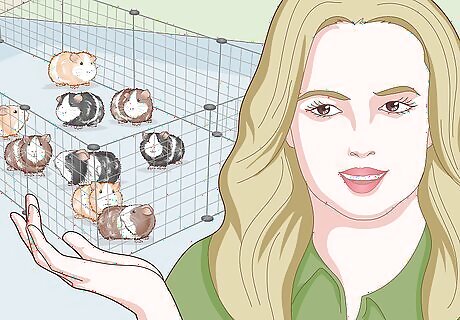
Seek advice from a reputable source. A veterinarian that specialises in guinea pig care or a licenced breeder is a good place to start. Otherwise, ask for some expertise from an animal shelter or someone who is knowledgeable with guinea pigs. Ask the important questions. What are their dietary requirements? What medical care do they need? etc. Try to get a rough estimate of costs and a breakdown of finances.
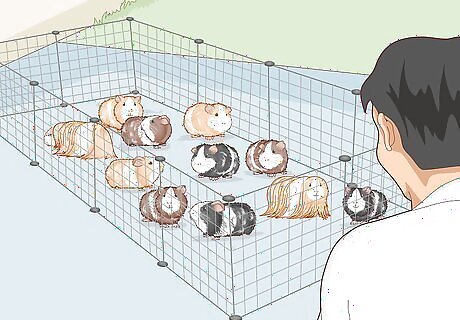
Visit an animal shelter. To get an accurate estimate on what it's like to run an animal shelter, visit one! It's free and the staff will likely be willing to help you out with any questions or concerns. Visiting an animal shelter allows you to seek advice from those who can accurately give it out. Try to find a shelter that primarily focuses on guinea pigs or other rodents, since they are similar to your desired organization.
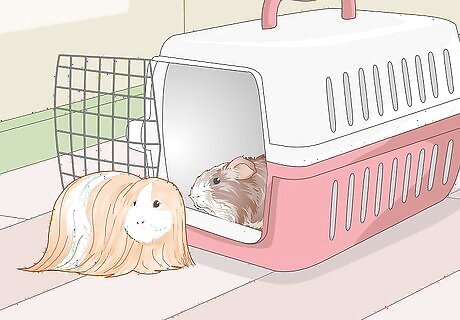
Adopt a pair of guinea pigs. A beneficial method of gaining experience while assisting other rescues is to start by adopting two or more guinea pigs to look after on your own. This way, you'll gain first-hand experience in caring for guinea pigs.
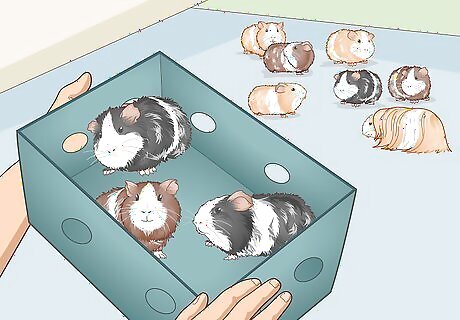
Consider fostering guinea pigs. Fostering is a rewarding experience that can provide you with a real taste that is similar to running a guinea pig rescue, as you'll have the responsibility of caring for multiple guinea pigs at once that have been surrendered by previous owners. To volunteer to foster, visit your local rescue and speak to one of the workers. You will likely have to fill out a form to confirm your integrity, and then if any guinea pigs are available, the rescue will keep you in contact.
Constructing a Guinea Pig Rescue
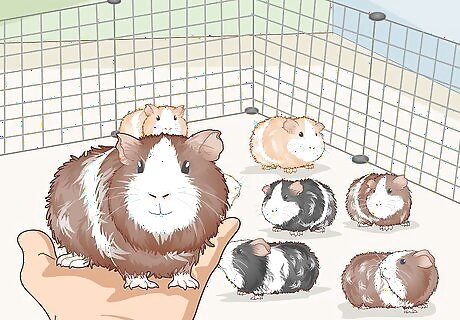
Determine what your rescue will look like. Because guinea pigs are such small pets, sometimes it's sufficient enough to start small and set-up a rescue within your own home. This will reduce costs vastly, as you won't need to hire a large space. The only requirement for a home-run rescue is a financial platform, plenty of time, and enough space in either your house or your backyard.

Check your weather and climate conditions. It's important to understand whether guinea pigs can sustain the living conditions outdoors. Frost and heat can impact your guinea pig's health heavily. If this happens then you may need to move your rescue base indoors rather than outside. Otherwise, consider investing in a large shed with ventilation and temperature control.
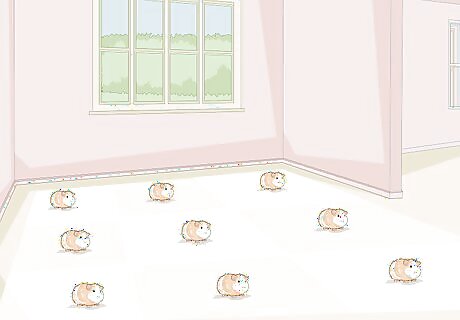
Find enough space. As a rule of thumb, two guinea pigs will require 7.5 square feet (27" x 41") of space and an extra 3 square feet added on per guinea pig within the enclosure. For example, a cage with two guinea pigs that is 7.5 square feet (27" x 41") will need to be expanded to 10.5 square feet (27" x 56") if you'd like to introduce another guinea pig to the cage. You'll need to have plenty of separate cages distanced from each other to keep boars away from sows. You can have as many sows housed together, providing that you have enough space, however, boars ideally should only be housed in pairs to prevent fighting. Keep in mind that boars will fight each other even if they can see or smell sows within the same room. You may need to keep boars in a different space.
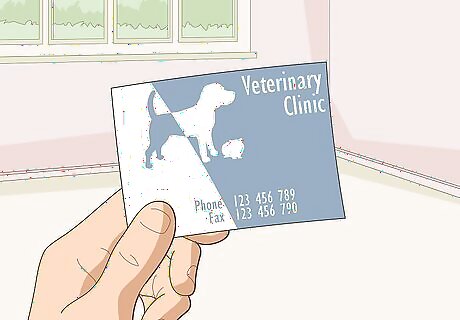
Keep your local vet's contact details. Housing a large amount of guinea pigs means that you're more at risk of any medical issues arising. Animals are very expensive to manage when they suddenly become sick or injure themselves. It's advisable to sign up for veterinary insurance to minimise medical costs. However, you will still need to have enough financial funds to take care of emergencies. Seek a vet that specialises with guinea pigs, such as an exotic vet, and keep their contact details somewhere safe, as well as an emergency vet. Emergency vets are very important when you are sheltering pregnant sows. With a mortality rate of 20%, it would be unwise to not have an emergency contact available.
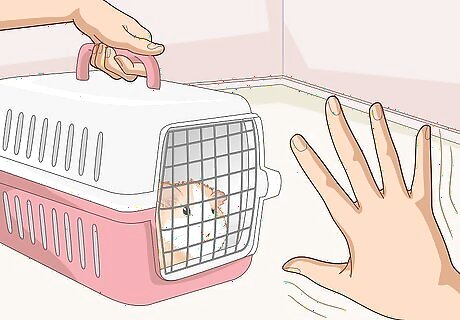
Determine your limit. Though it may be tempting to rescue as many guinea pigs as possible, it's important to establish your limit determined by the capacity of your rescue and your financial budget. Accepting too many guinea pigs than you can handle will lead to overcrowding and unsanitary conditions. Determine your limit, stick by it, and stay firm. For example, if for some reason you cannot afford to take in pregnant guinea pigs, or feel uneasy with their mortality rate, it's important to stick to those rules and let others know. Limits can come into toll with anything. You may have to decide to no longer take in any more guinea pigs because your rescue is full. Or you might have a rescue strictly for female sows so that your guinea pigs can be housed in one large enclosure. It's important to set your limits and stick by them.
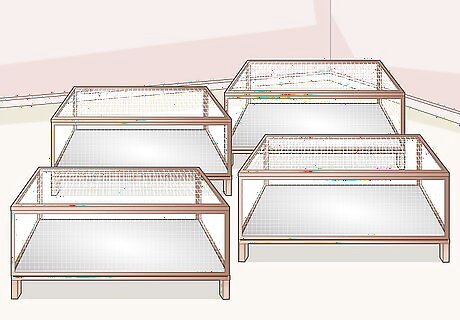
Acquire enough cages to house several guinea pigs at once. As a rule of thumb, it's best to start with at least four large cages. Guinea pig hutches or chicken coops make great outdoor enclosures. Otherwise, consider building a large shed. C & C cages make excellent enclosures for indoor guinea pigs. These type of cages are easy and cheap to build, and can easily be torn apart and expanded when required. Your guinea pig's cage will need to have some form of shelter and security from weathering elements or outside predators if you are housing your guinea pigs outdoors. Guinea pigs prefer a temperature between 65-75 degrees Fahrenheit. They don't do well in areas with frequent temperature fluctuations or are prone to heat and cold.
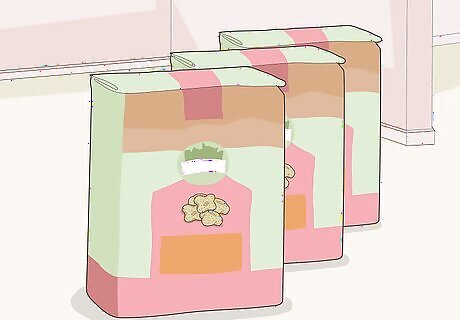
Purchase your guinea pig food in bulk. It's important for guinea pigs to be fed a nutritious diet with pellets that are fortified with vitamin C. If you purchase your pellets in bulk, you will likely save money and make less frequent trips to the feed store. Science Selective and Vetafarm sell their pellets in large bags. Otherwise, Oxbow pellets can be purchased in bulk. Be mindful that vitamin C degrades over-time, especially in sunlight. You should only plan on storing your guinea pig's food for no more than three months. Avoid muesli mixes. Guinea pigs only need plain pellets, which are less costly.

Learn how to save money buying vegetables. Each guinea pig requires one cup of vegetables a day, totalling to 15% of their daily diet. Fresh produce will account to the highest expense of your monthly budget, therefore it's advisable to seek vegetables at the lowest cost in your area. You can reduce the cost of vegetables through a number of ways. Buy quality-deficient vegetables. These vegetables are still completely edible but may be marked down due to bruises on the vegetables or small size. Shop at a farmers market. These destinations generally mark their fresh produce down to a cheaper price than commercial value because they are home-grown. Purchase in bulk to receive a discount on fresh produce. Buy vegetables that are in season for the lowest cost. For example, tomatoes and bell peppers are in season in warmer months, meaning they cost less in summer.
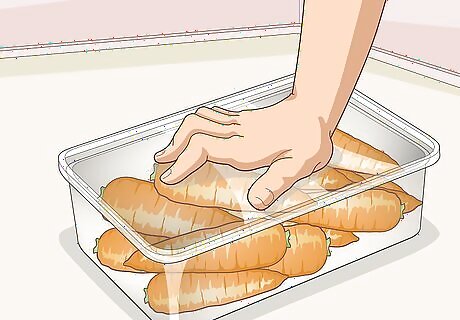
Store food properly. To avoid infestations from bugs, mice, or rats, store your pellets in a large storage bin or container. To make your vegetables last, especially if purchased in bulk, separate them in sealed containers and store them in a freezer.

Acquire an unlimited supply of hay. Guinea pigs are fibrevores with hay making up 80% of their daily diet. Therefore, It's essential for your guinea pigs to have constant access to hay throughout the day. Purchase fresh, grassy hay, such as Meadow or Timothy hay, as opposed to alfalfa or oaten hay. Purchasing your hay in bulk by the bale will cut down on costs. Avoid buying hay from pet stores which tend to mark up the sale of their hay by the bag.
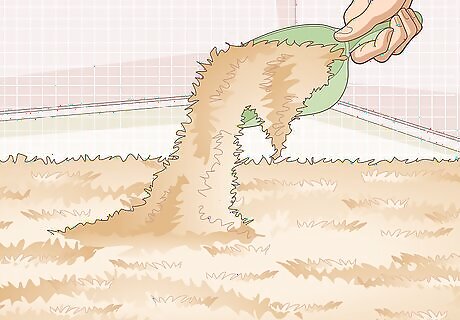
Find a suitable bedding material. While bedding can become an expensive monthly requirement, you can mitigate expenses by choosing a cost-effective bedding material that is available in bulk purchase. Wood shavings can be purchased in bulk and also compacted, making it easier to store. Aspen and kiln-dried pine shavings are suitable options. Ensure that you select wood shavings that have been dust-extracted. Do not buy cedar wood shavings, as these contain harmful hydrocarbon oils that cause respiratory issues. Consider fleece as an inexpensive bedding option. Fleece is cost-effective and reusable. On the contrary, fleece also requires more regular maintenance as opposed to wood shavings.
Advertising and Finances
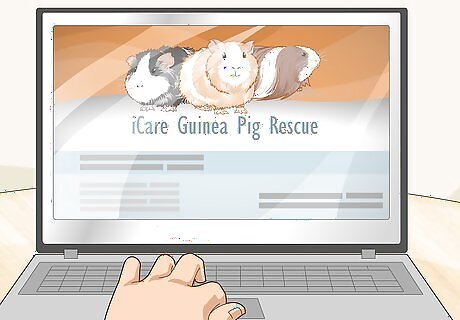
Create your online website. An online website can be a great way for buyers to search you up on the net and contact you. With your website, you can easily advertise your animals on the main page and share your contact details for those who stumble across it. You can also source your link when you advertise elsewhere for the main gate.
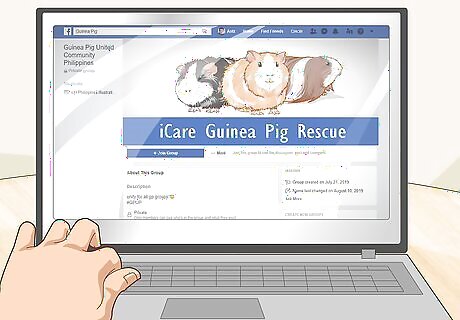
Take to a social media platform. They do say that the power of social media can work wonders, and it's true! Today, a large community uses social media, especially to sell and buy things. There should be available group pages that allow the selling of animals just for your own area/town. You achieve a lot more views through here or create your own Facebook page.
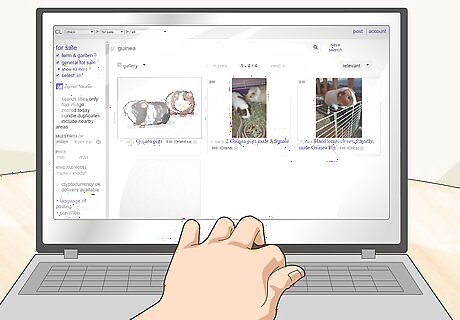
Use an advertisement website. There are a lot of ways to buy and sell items, but the most used platform is mainly through sites such as Gumtree and Craigslist because they are primarily for just buying and selling. These two websites are free to use and very beneficial. Expect a buyer soon when you use either of these sites. On Gumtree and Craigslist you will be expected to fill in your contact details, a price range, pictures and a description of what you're selling. Although pictures aren't always necessary, they do draw attention to your ad.

Spread the word around town. It's always helpful to get the attention of your business by letting others know. Ask your friends or relatives if they know anyone interested in getting a new guinea pig or pet - you may be able to find a future buyer.
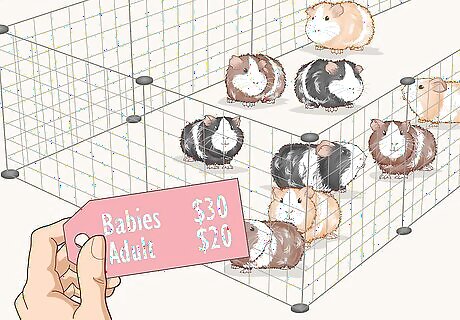
Set a fixed price. You may want to look at the market price for the average guinea pig. Go to your local pet shop or onto craigslist and see how much guinea pigs are selling. Babies tend to sell for more than adult guinea pigs due to market demands. Don't make the price too high so that it scares off customers but don't make it too low that you go broke.
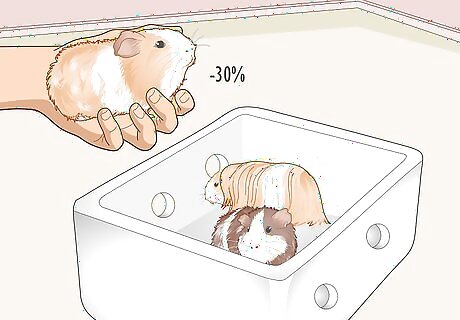
Offer deals. To increase your customer interest towards your rescue you could offer deals for certain purchases. Such as; if someone is buying a large group of guinea pigs you could offer them a cut on the price. A lot of times when rescues are having troubles selling their animals they tend to do a price cut on all of their animals for a limited amount of time.
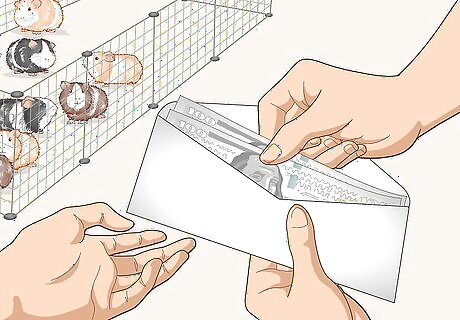
Consider accepting donations. If you're tough in a financial struggle then you may want to consider help. Donations go towards a heart-warming cause so why not set one up? You can offer a donation option to those who stumble across your organization online or in person.




















Comments
0 comment